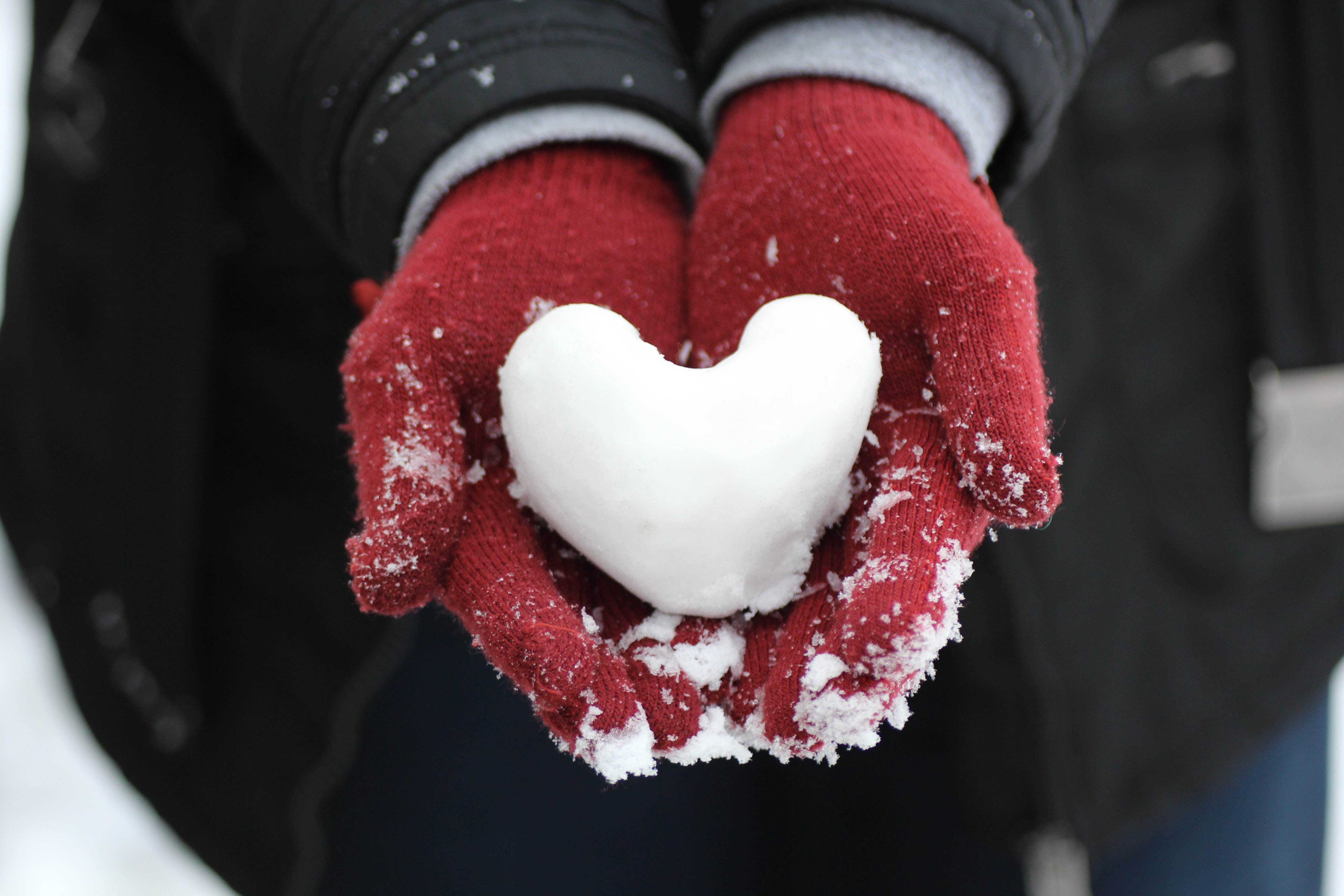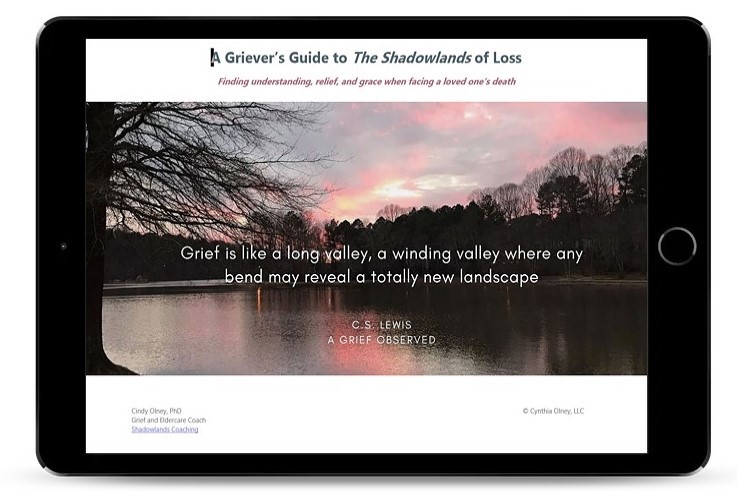One snowy night long ago, my pregnant mother thought she had indigestion. A neighbor argued it was labor and insisted she head to the hospital immediately.
Thankfully, Mom took her advice, because I was born soon thereafter. Score one for the neighbor.
Such is the story of my birth, at least my mother’s version of it. She would recount it each year in my birthday card.
Now, the only person from my world who was present at my birth is gone.
How I miss those cards and The Story of Me.
We Live in Others’ Memories
In the past year, I had the privilege to attend two virtual Celebrations of Life. In one case, I barely knew the person who died. In the other, I literally never met them.
Yet, as guest after guest spoke, the lives of their loved ones unfolded before me. I met these wonderful, multi-dimensional people through the stories of those who knew and loved them.
It struck me how much we live in the memory of others. Our families. Our friends. We are part of their identities and they, in turn, reinforce ours.
What you leave behind is not what is engraved in stone monuments, but what is woven into the lives of others. ~ Thucydides, classical author, History of the Peloponnesian War
Mothers and fathers describe how we entered and navigated this world. Siblings and cousins keep the secrets of our death-defying childhood acts and stupid risks of young adulthood. Grandparents, aunts, and uncles fashion our spot in the family story, comparing us to other family members, past and present.
Our spouses recount the challenges of our side-by-side lives. They can relive with us the sunsets, oceans, exotic travels, and exquisite restaurants that enriched our years together.
And then, there are our friends, who knew us from different worlds and different life chapters.
We need others’ memories of us. Shared memories help us feel rooted in our own lives.
That’s why, when one of our life companions dies, it’s disorienting.
It takes work to mend the hole in our identity caused by the death of someone deeply connected to us.
How?
We Mourn
Mourning is the outward expression of grief.
It demands an audience.
It’s why humans have always waked their dead. Our rituals provide outlets for the ways humans connect and share emotions: storytelling, singing, breaking bread, and, in some cultures, dancing.
My husband’s family still observes all the typical Western traditions: viewing, funeral with Catholic mass, funeral procession, graveside ceremony, wake for relatives and close friends. These events are a mix of tears and celebration, filled with slide shows, heartwarming and funny stories, beloved hymns and prayers, spreads of refreshments.
Death leaves a heartache no one can heal; love leaves a memory no one can steal ~ from a headstone in an Irish cemetery
By contrast, my own family’s grief rituals are austere.
After my mother died, my small immediate family gathered in my parents’ apartment with a bag of sandwiches from Panera. My mother’s wishes were followed. No public events. Just a short obituary in the hometown and local newspaper, and in her college alumni magazine.
Mom was explicit in her instructions. In fact, she once threatened to haunt me if I didn't follow them.
In the immediate aftermath of her death, I was relieved. I was exhausted from the long vigil, and the grief hurt a lot. Her requests were mercifully manageable.
But as the reality of her passing sunk in, I realized her wishes didn’t fulfill my own needs. I needed to mourn.
To somebody. To many somebodies.
I needed to get creative.
My Slow Wake
On my first day of bereavement leave, I spent hours on the phone with Mom’s friends.
They needed the calls as much as I did. Because her closest friends lived miles away, most could not have attended a service if it had been offered. And a Zoom meeting was not something most of them could maneuver. Yet they, too, needed to mourn their dear friend.
Later that year, when the weather was more forgiving, my husband and I traveled to my hometown, where my mother taught for 30 years. Her friends opened their homes to us, although visits were scheduled around Steelers game. (Mom, a Pittsburgh native, would have understood.)
They told me they missed her. That they knew she had suffered and were glad her pain had ended. One said she still talked to Mom.
I also spent time with high school classmates. They offered condolences. We swapped stories about accompanying parents through end of life.
In the end, I put together my own version of Mom’s celebration of life. One that turned out to be perfect for my introverted nature. One or two people at a time. Long, lovely conversations. Lots of time in between to reflect and feel and recover.
The trip went a long way to settling my heart.
The Big Photo Sort
As I reflect over the past few years, I realize there were other ways I reconnected to my life roots and reconciled my grief.
My family started sorting through photos as my mother moved closer to death. We shared stories as we went, narrating these glimpses of family history.
Remember those ladders at Mesa Verde? Where we climbed 25 feet up the side of a cliff? I was terrified and so was Mom. I can’t believe we did it!
Remember that motorcycle Dad bought from his secretary? Her mother was sure Mom would divorce him when he brought it home. She even offered him their spare room.
That’s the restaurant where we celebrated Mom’s 80th birthday. She was so surprised! How did we ever keep it a secret for months? You know, I almost blew it!
After she died, we passed along some of the pictures to relatives and friends. I posted some on Facebook, tagging others who were at the events recorded in the photos. The stories continued and so did my healing.
Taste of History
Food also connects us powerfully to our history.
As my mother approached her end of life, my family started pulling together her recipes that had become family favorites.
I had the recipes that reached back decades to my childhood. My sister-in-law had the ones for the dishes my mother cooked during the years she lived near their family. My nieces did Internet searches for online versions of misplaced recipes she’d apparently committed to memory.
That first Christmas when she no longer could join family gatherings, we at least had her broccoli salad, caramel brownies, and “no-no” cake.
These days, I’m officially the family brownie maker. When COVID forced us to cancel family holiday gatherings, I spent a ridiculous amount of money to ship the baked goods to my relatives.
We all agreed: It was worth every penny.
Friends Beyond Family
It’s been more than three years since my mother died, but I don’t think my movable wake has truly ended. But I have shifted my focus.
Now, I reach out to people beyond my family circle who share my history. Friends from high school, college, graduate school, former jobs. I take advantage of current technology that allows me to find and connect conveniently and inexpensively with old buddies from my past.
I’m also fortunate to have dedicated leaders from my high school senior class who diligently organize high school reunions every five years. The cliques and social hierarchies have eroded. Local schoolmates are grateful to those of us who make the pilgrimage “home.” The travelers are happy that a part of home still exists.
We eat and drink together, comparing our common experiences: raising children; welcoming grandchildren; burying loved ones; facing our own mortality. We solemnly light a growing bank of candles for classmates who have passed.
These people help me remember where I came from and where I’ve traveled in my six decades of life. They help me feel more connected to the flow of life.
It’s comforting in the oddest way.
Rituals of Reminiscence
These are my mourning rituals, but there are as many variations as there are people. For example, friends and clients have talked about:
- Creating slide shows or making photo books to share at family gatherings
- Displaying their loved one’s artistic creations, like paintings, quilts, or woodwork (or posting pictures on social media)
- Visiting birth places or hometowns or family vacation spots
- Hiking on their loved one’s favorite trails or beaches
- Going through a box of a loved one's keepsakes with friends or family members
- Organizing their loved one's friends to attend to enjoy mutually adored activities like concerts, plays, sporting events, or favorite restaurants
- Visiting ongoing social circles that their loved ones belonged to, such as knitting circles, poker gatherings, church groups, or golf partners
The key is to share your activities with others so you can tell stories. It’s the act of sharing stories that helps you honor and release your loved one. Helps you reconcile your loss.
It may take a few years. Or decades. Or the rest of your life.
That’s okay.
Take as long as you need.
Photo credit: Photo by Mick Haupt on Unsplash
Questions about coaching? Schedule a free discovery call. Click the button below to get started.
Rather connect through email? Send your questions to cindy@shadowlandscoaching.com.

Grief Support in a Pandemic World
A six-week program for coaches, doulas, and other professionals with clients facing life transitions. Learn how to support clients through grief by first working through your own.
Class starts January 25, 2022, 2 pm US ET. Click here to learn more or enroll.
Have you recently lost someone dear to you? Or are you worried about someone who has? Download your free copy of A Griever's Guide to The Shadowlands of Loss. It covers some key elements to grieving and a few helpful strategies that can ease your experience of grief.

